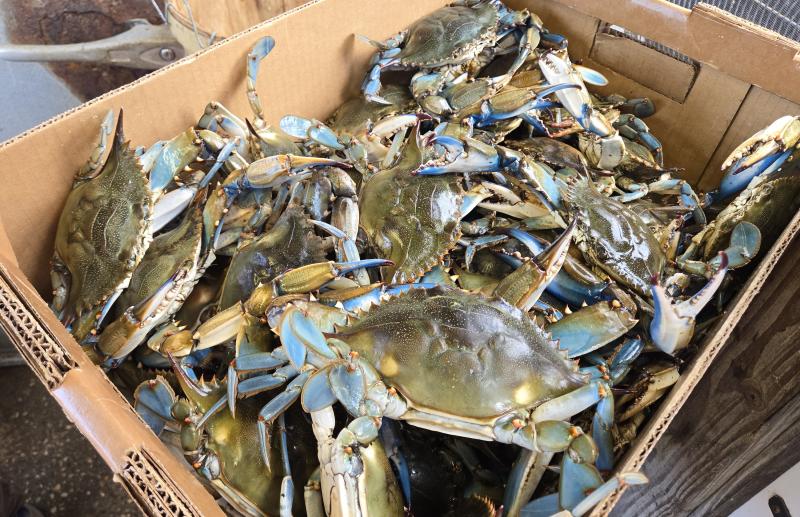Could a blue crab hatchery be coming to Delaware?
Delaware’s blue crab commercial fishery is larger than all the other fisheries in the state combined. If Dan Mills has his way, he’ll be adding to that fishery by building the state’s first blue crab hatchery.
Mills went before the state’s Advisory Council on Shell Fisheries in early March. The demand is high, but the wild stock is dwindling, said Mills, on why he’s looking into the project. The potential for job creation is there too, he said.
Mills went before the council to gauge their interest in the project. For the hatchery to get off the ground, two state laws would have to change – one related to not being allowed to have juvenile crabs in his possession; another related to not being allowed to have sponge crabs, females with eggs, in his possession. Mills suggested the laws could be changed to allow possession if the juvenile crabs are hatched and the sponge crabs are kept in an aquaculture system.
There was some discussion about whether local watermen would want the additional competition, but a general consensus was reached that there are blue crabs coming into Delaware from other states, so a hatchery wouldn’t add much more. In the end, council seemed to have a favorable view on the plan, but it ultimately said Mills would have to get the laws changed, and that would take an act of the General Assembly.
Mills said he’s looking to have this approved, built and operational in the next year. It will be incumbent on him to make sure it’s a working model, he said.
Ed Hale, an assistant professor in the University of Delaware’s School of Marine Science and Policy, and fisheries and aquaculture extension faculty with Delaware Sea Grant, sits on the council. One of his recent projects was overseeing the creation of the state’s first oyster hatchery at the university’s Lewes campus a couple years ago.
The biggest issue will be producing and then keeping larvae alive, said Hale during the meeting.
Mills has a good amount of work ahead of him for the project to come to fruition, said Hale in an email after the meeting. He has to figure out how to hold adult animals, spawn those animals, and then keep larvae alive, said Hale.
“The survival and growth of the larvae is a very difficult stage in production,” said Hale.
Blue crabs produce a lot of eggs, but have low levels of larval survival, said Hale. They release millions of fertilized eggs into offshore currents, so they’ve evolved to deal with high levels of mortality, he said.
Additionally, Mills will have to replicate the environmental conditions for a blue crab within a closed laboratory and production facility, said Hale. A few academic institutions have figured out how to culture blue crabs, so there’s a blueprint, but there’s also a lot of work to do to figure out how to successfully produce crabs, he said.
In addition to growing crabs, Hale said, Mills has to figure out a market and marketing for his product. Often, he said, new aquaculture producers can get hyperfocused on crop production but forget to consider the sales aspect of aquaculture.
“I think so long as he is preparing with some type of market study [and] analysis, and doing everything he can to ensure larval survival, he can be successful,” said Hale.
There are people in Delaware who would like Mills to be successful, said Hale. These types of business opportunities can help diversify the state’s business portfolio within the broader blue economy, he said, referencing a business model that encourages sustainable use of ocean resources for economic growth.
“We know blue crabs command a high price point by the bushel,” said Hale. “I think he has a lot of potential, and I am hopeful he will be able to produce another crop for the state of Delaware.”
Following the meeting, Mills declined to comment more on his plans. It’s a bit premature, he said.
Chris Flood has been working for the Cape Gazette since early 2014. He currently covers Rehoboth Beach and Henlopen Acres, but has also covered Dewey Beach and the state government. He covers environmental stories, business stories and random stories on subjects he finds interesting, and he also writes a column called Choppin’ Wood that runs every other week. Additionally, Flood moonlights as the company’s circulation manager, which primarily means fixing boxes that are jammed with coins during daylight hours, but sometimes means delivering papers in the middle of the night. He’s a graduate of the University of Maine and the Landing School of Boat Building & Design.



















































